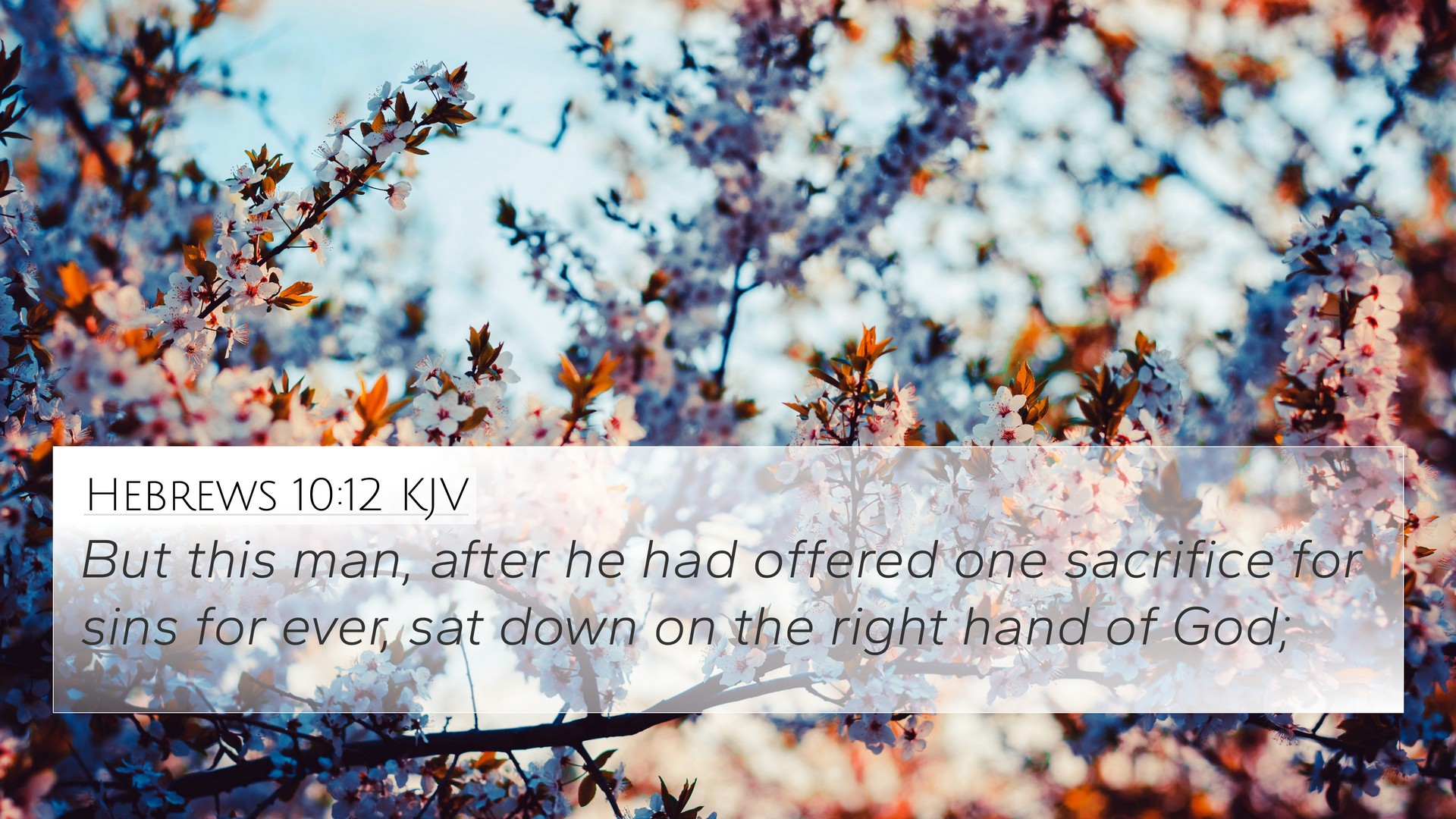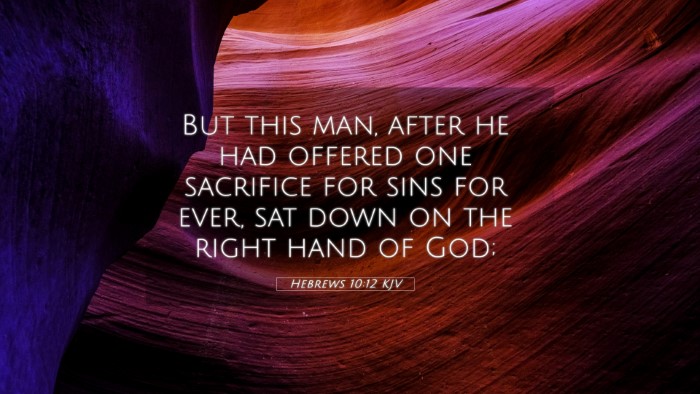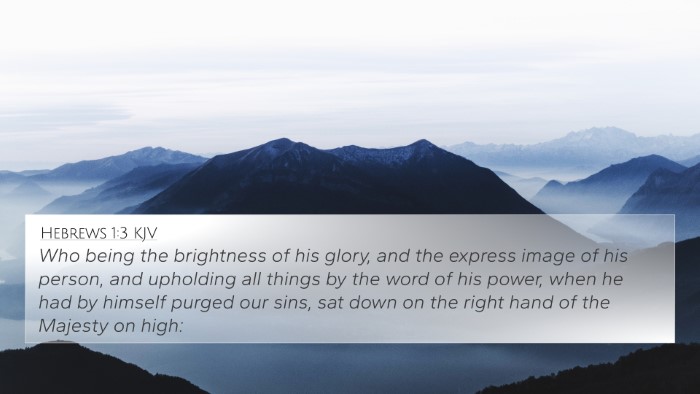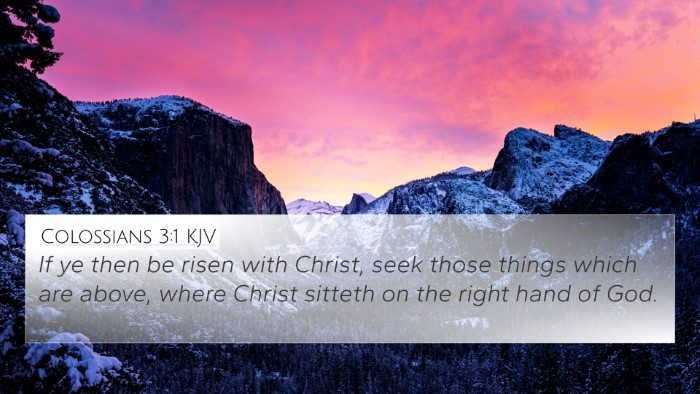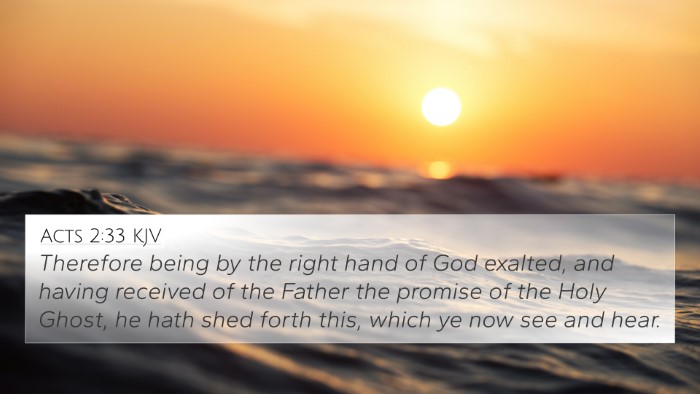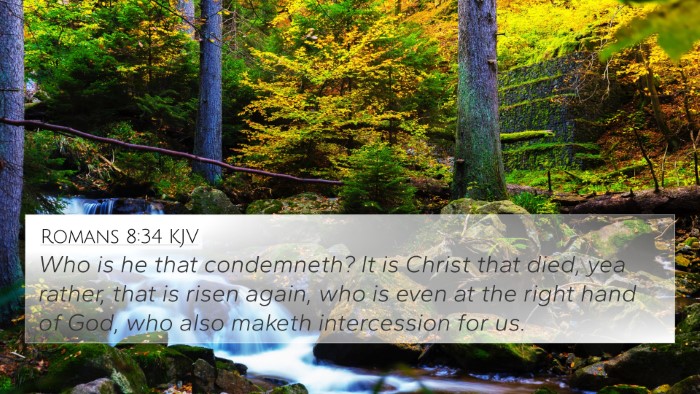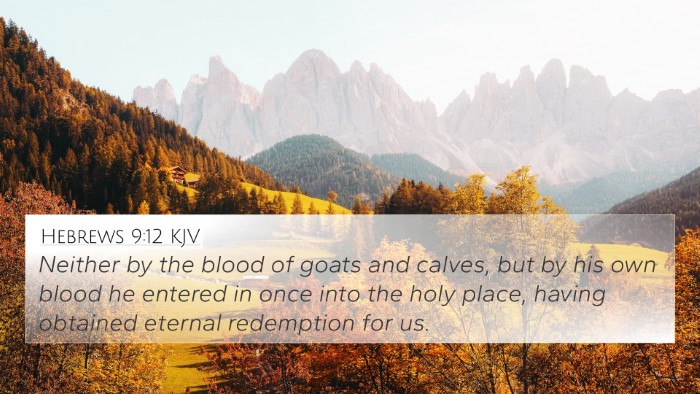Understanding Hebrews 10:12
Hebrews 10:12 states, "But this man, after he had offered one sacrifice for sins forever, sat down on the right hand of God." This verse holds profound significance in explaining the completed work of Christ and its implications for believers.
Meaning and Interpretation
The verse is pivotal in demonstrating the superiority of Christ's sacrifice compared to the Old Testament sacrifices. Matthew Henry emphasizes the finality of Christ's offering, stating that it was made once for all and thus negates the need for repeated sacrifices.
Albert Barnes adds that the act of sitting down signifies the completion of His work. In the Jewish tradition, the priest never sat down because his work was never finished, but Christ's seating at the right hand of God signifies His victory over sin and death.
Adam Clarke notes that the location of Christ's seating position is significant; sitting at the right hand symbolizes power, authority, and completion of His redemptive work. This position enables Him to intercede for believers as their advocate.
Theological Implications
- Completion of Sacrifice: The emphasis on "one sacrifice" highlights the sufficiency of Christ's atonement for sin.
- Assurance of Salvation: Believers can be confident in their salvation due to Christ's finished work.
- Authority and Majesty: Christ's position at the right hand of God reflects His divine authority over all creation.
- Intercession: His role as intercessor reinforces the ongoing relationship between Christ and believers.
Cross-References
To deepen the understanding of Hebrews 10:12, we can explore the following cross-references:
- John 19:30: “It is finished.” — Christ's declaration of the completion of His work.
- Romans 8:34: “Who is he that condemneth? It is Christ that died, yea rather, that is risen again, who is even at the right hand of God, who also maketh intercession for us.” — Affirming Christ's role as an intercessor.
- 1 Peter 3:22: “Who is gone into heaven, and is on the right hand of God; angels and authorities and powers being made subject unto him.” — Indicative of Christ's authority.
- Matthew 26:64: “Jesus saith unto him, Thou hast said: nevertheless I say unto you, Hereafter shall ye see the Son of man sitting on the right hand of power, and coming in the clouds of heaven.” — A prophetic view of Christ’s authority.
- Hebrews 1:3: “Who being the brightness of his glory, and the express image of his person, and upholding all things by the word of his power, when he had by himself purged our sins, sat down on the right hand of the Majesty on high.” — Connecting the glory of Christ to His sacrificial work.
- Hebrews 7:27: “Who needeth not daily, as those high priests, to offer up sacrifice, first for his own sins, and then for the people’s: for this he did once, when he offered up himself.” — Further affirmation of the sufficiency of His sacrifice.
- Isaiah 53:5: “But he was wounded for our transgressions, he was bruised for our iniquities: the chastisement of our peace was upon him; and with his stripes we are healed.” — The prophetic foundation for Christ’s atoning work.
Connections Between Bible Verses
Hebrews 10:12 serves as a connecting point for several biblical themes:
- The Atonement: Understanding Christ's sacrifice as the fulfillment of Old Testament prophecies regarding atonement.
- Christ's Authority: The linkage of Christ's sacrifice with His exaltation and dominion.
- Intercessory Role: Connecting Hebrews 10:12 with Jesus' ongoing role as the mediator between God and humanity.
Thematic Bible Verse Connections
When exploring significant themes, it becomes essential to analyze how multiple verses interconnect, providing a deeper understanding of biblical doctrines:
- Redemption: Related verses include Ephesians 1:7 and Colossians 1:14 which highlight the theme of redemption through Christ.
- Faith: Hebrews 11:1 is interconnected with Hebrews 10:12 by illustrating the essence of faith in what Christ has accomplished.
- Sanctification: Connecting unto 1 Thessalonians 5:23, we see how Christ's role is foundational in the believer's sanctification journey.
Conclusion
In summary, Hebrews 10:12 encapsulates key theological concepts surrounding the atoning work of Christ, His position of authority, and His ongoing role as intercessor. Understanding this verse through various public domain commentaries enriches our comprehension and appreciation of the interconnectedness of scripture.
